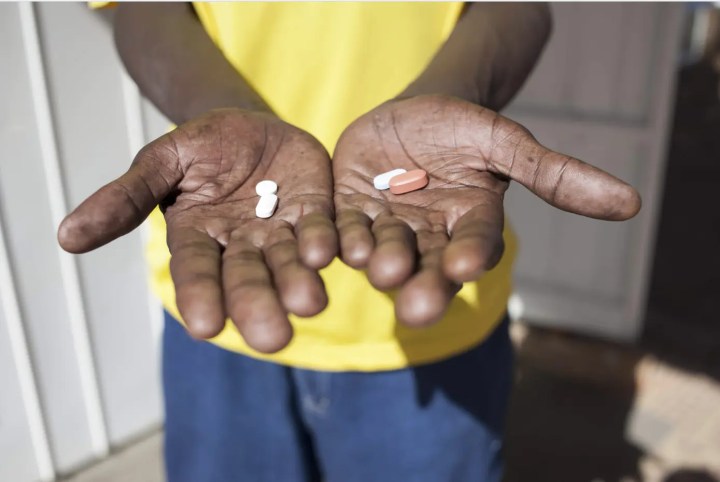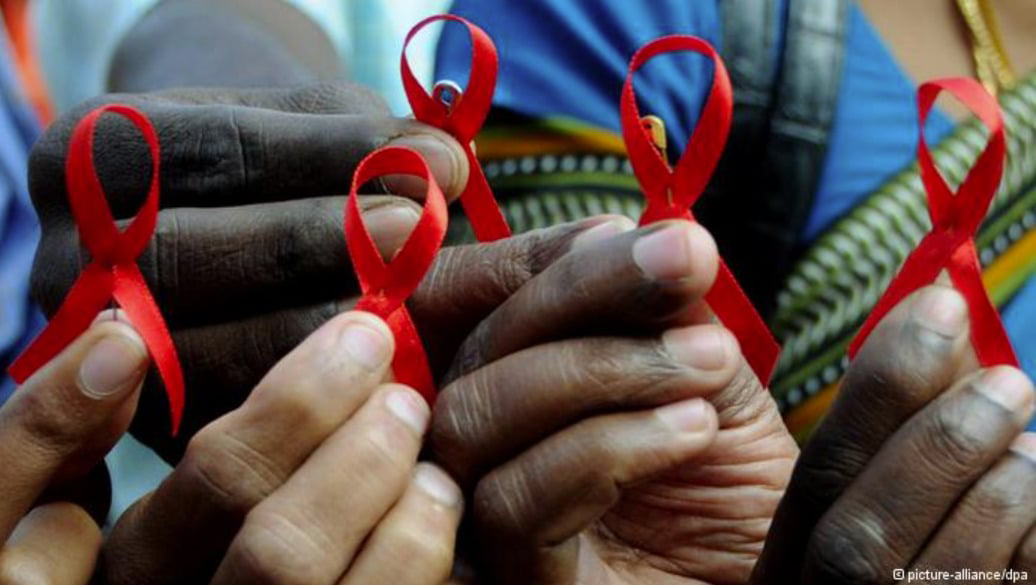SPOTLIGHT
More than 4.7m people in South Africa placed on new HIV med in four years

In what is likely to be one of the largest treatment roll-outs in South African history, well more than four million people living with HIV have started taking the antiretroviral dolutegravir since its introduction about four years ago. Now, according to a recent study published in the Lancet medical journal, use of dolutegravir in South Africa is associated with more people staying on treatment and higher rates of viral suppression. Elri Voigt unpacks the study findings and assesses progress in the country’s switch to dolutegravir-based HIV treatment.
The use of a three-in-one combination of the antiretroviral drugs tenofovir, lamivudine and dolutegravir (TLD) for the treatment of HIV was first recommended by the World Health Organization (WHO) in 2018. A year later it was recommended in the South African treatment guidelines as first-line treatment for HIV, and a three-year tender was awarded. Since then, dolutegravir has largely replaced another antiretroviral called efavirenz.
Today, TLD is the recommended treatment option for most people living with HIV in the country. The 2023 national antiretroviral (ARV) guidelines also include recommendations for the use of child-friendly formulations of dolutegravir and dolutegravir-containing regimens in kids. Spotlight reported on these here.
About 4.7 million people in SA taking dolutegravir
According to Health Department spokesperson Foster Mohale, in 2019 the HIV clinical guidelines were revised to include a fixed combination dose of TLD “for all eligible people for use as the first-line regimen”.
Based on this, the department set a goal that 90% of those eligible for it should receive TLD as a first-line regimen. Mohale says that by March 2023, 4,127,427 people were on TLD, and 653,884 were on other dolutegravir-based regimens, which means there are more than 4.7 million people in the country on treatment combinations that include dolutegravir.
“Based on the March 2023 data, 90% of clients on first-line regimen were on TLD. However, performance varies by province,” he says.
Of the total number of people on ART in the public health sector, 75.8% are on TLD, according to Mohale.
Trends in the roll-out
While on paper the country’s transition from efavirenz- to dolutegravir-based regimens seems to have been smooth, the reality on the ground has been more complex. A study published in the Lancet earlier in 2023 looked at real-world roll-out data from 2019 to 2022. It was conducted in 59 clinics across the country and collected data from two cohorts: first time initiators of ART and people transitioning from regimens that did not include dolutegravir to ones that did.
In the initiator cohort, just more than 45,000 people were initiated on ART between December 2019 and February 2022. Of those, 68.9% were initiated on dolutegravir-based regimens, 31.1% on efavirenz-based regimens and 0.1% on nevirapine-based regimens.
Those initiated on dolutegravir-based regimens were more likely to still be on treatment a year later and were also more likely to be virally suppressed than those who were initiated on the other regimens.
Read more in Daily Maverick: New HIV treatments and guidelines to benefit children, with more advances on the horizon
In December 2019, in the transition cohort, just more than 180,000 people were on a non-dolutegravir first-line regimen. By February 2022, 67% of them had transitioned to a dolutegravir-based regimen. These people were also more likely to be retained in care at 12 months and be virologically suppressed than those who had not switched to that regimen.
“That’s good for a number of reasons. It means that the treatment’s working, people are less likely to get unwell and also, they can’t transmit the virus onto other people,” explains Dr Jienchi Dorward, one of the study authors and an academic clinical lecturer at the University of Oxford and honorary associate scientist at the Centre for the Aids Programme of Research in South Africa.

Of the total number of people on antiretroviral treatment in the public health sector, 75.8% are taking the three-in-one combination of tenofovir, lamivudine and dolutegravir. (Photo: Spotlight)
‘Bumpy transition’
Dr Yukteshwar Sookrajh, a senior medical practitioner at the eThekwini Municipality Health Unit who was also involved in the study, tells Spotlight that the roll-out quickly gathered momentum.
“But initially there were some issues to navigate around drug interactions; concurrent TB infection and the use of dolutegravir in women of child-bearing potential,” he says. “Once those concerns were addressed, the comfort of switching to dolutegravir was increased and we find that the majority of our patients have now safely transitioned to dolutegravir-based regimens.”
In many ways South Africa was slow in rolling out dolutegravir compared with other African countries, according to Professor Francois Venter, the head of Ezintsha at Wits University. The reasons included an initial concern about the safety of dolutegravir use among pregnant women, and disruption in training due to the Covid-19 pandemic.
He says the South African Clinicians Society was alerted during the Covid-19 pandemic that many patients in the public health sector had still not been transitioned to dolutegravir. An education campaign was then launched to encourage clinicians to start or switch patients to dolutegravir.
However, as it stands now, the roll-out of the drug in the public sector has been a huge success, despite what Venter calls a “bumpy transition”.
“All the data we have on it [dolutegravir] suggests that the patients have done much better, their viral load suppression levels are better, the side-effect profiles so far are better,” he says.
Initial safety concerns
One important reason to conduct the study reported in the Lancet, according to Dorward, was a safety concern about the use of dolutegravir by pregnant women. An earlier study in Botswana called Tsepamo found a higher prevalence of neural-tube defects (a type of birth defect) associated with dolutegravir exposure at conception than with other types of antiretroviral exposure. However, with more data it has become clear that the drug does not increase the risk of these defects.
But the Tsepamo scare did affect who was initiated and transitioned onto dolutegravir in the first two years of the roll-out.
“The initial concerns around neural-tube defects and the use of dolutegravir in women of childbearing potential clearly hampered roll-out of dolutegravir in women – and this has been clearly demonstrated in this study,” says Sookrajh.
Read more in Daily Maverick: With the right interventions we can help many more men start and stay on HIV treatment
The Lancet study found that pregnant women and non-pregnant women were less likely to be initiated on dolutegravir than men early in the roll-out, with the biggest difference between women and men aged between 15 and 24. This difference decreased with age and by 55 there was no difference between men and women receiving the drug.
But this changed over time and by September 2021 women were as likely to get initiated on dolutegravir as men. Spotlight has reported that the roll-out was done in two stages. In the first stage, men, adolescent boys, women on reliable contraception and older women were prioritised.
Of those who started treatment during the study period, 46.9% of the pregnant women in the cohort were initiated on dolutegravir-based regimens, while 63.9% of the non-pregnant women and 82.3% of the men were initiated.
“In both those groups [cohorts] we found that women were less likely than men to get dolutegravir, but interestingly, this was particularly in younger women,” Dorward explains. “As time went on, the difference between men and women became much less… around June to September 2021… we found that women and men pretty much began to equally get dolutegravir.”
Dorward says the data showed an uptick in women in the study being given dolutegravir once the South African guidelines changed to reflect that there was no longer a concern around neural-tube defects. It is thus likely that the safety concern was responsible for the lower initial uptake among young women.
According to Sookrajh, based on his experience “working at the coal face, the concerns around neural tube defects were a significant concern among all healthcare workers at the time”.
He adds that the messaging around this potential risk was based on the evidence available at the time and was clearly outlined in the guideline document and training for dolutegravir use, but these did not appear to adequately allay these concerns among healthcare workers.

Since it’s introduction into South Africa’s HIV treatment programme in 2019, dolutegravir has been widely rolled out in public sector. (Photo: Spotlight)
“The risks versus benefits needed to be messaged in a more effective way such that healthcare workers were more comfortable and confident in offering dolutegravir to women,” he says. Based on this experience Sookrajh adds that in future there needs to be more engagement with “practitioners on the ground to determine what type of messaging and supportive materials are required to facilitate better understanding of guidelines at the coal face”.
Another concern for some healthcare workers has been that dolutegravir-based regimens have been associated with greater weight gain than efavirenz-based regimens. But, as argued in a recent editorial in the Southern African Journal of HIV Medicine, association is not the same as causation and it may well be that efavirenz inhibits weight gain rather than dolutegravir promoting it. People living with HIV who start taking antiretroviral medicines often gain weight as their health recovers.
New guidelines should further boost uptake
Sookrajh says the Department of Health’s antiretroviral 2023 guidelines will further improve the uptake of dolutegravir in the public healthcare system.
“With the April 2023 National Department of Health ARV Guidelines, we actually find that further barriers to switching to dolutegravir have been removed and dolutegravir is clearly placed as the preferred drug of choice in almost all scenarios for both first- and second-line antiretrovirals,” he says.
“I think the new [ARV] guidelines hopefully will be a big improvement for people who are on treatment, and part of that is possible because we’re using the drug that is better. You’re less likely to get resistance with dolutegravir so we’re less worried if people don’t take treatment properly that they might get drug resistance, although we still need more research to be sure about that,” Dorward says. “And it’s still very important for people to take treatment consistently to suppress the virus and maintain their own health and prevent onward transmission.”
According to Venter, there needs to be proper resistance surveillance to detect potential dolutegravir resistance.
“We can’t take for granted we’ll never have resistance [to dolutegravir]… eventually there will be the occasional patient who does have resistance, but we need proper surveillance there,” he says. “And then we need to keep an eye on things. There are still patients getting HIV… there’s still a lot of new infections… we need to make that stop… we’ve got amazing PrEP and way too few people getting it. So, we do need to start addressing that.” (PrEP, or pre-exposure prophylaxis, refers to antiretrovirals taken to prevent HIV infection.)
Venter adds that while successful in the public health sector, the uptake of dolutegravir has been extremely slow in the private sector for reasons unknown to him. DM
This article was produced by Spotlight – in-depth, public interest health journalism.






















 Become an Insider
Become an Insider
Comments - Please login in order to comment.